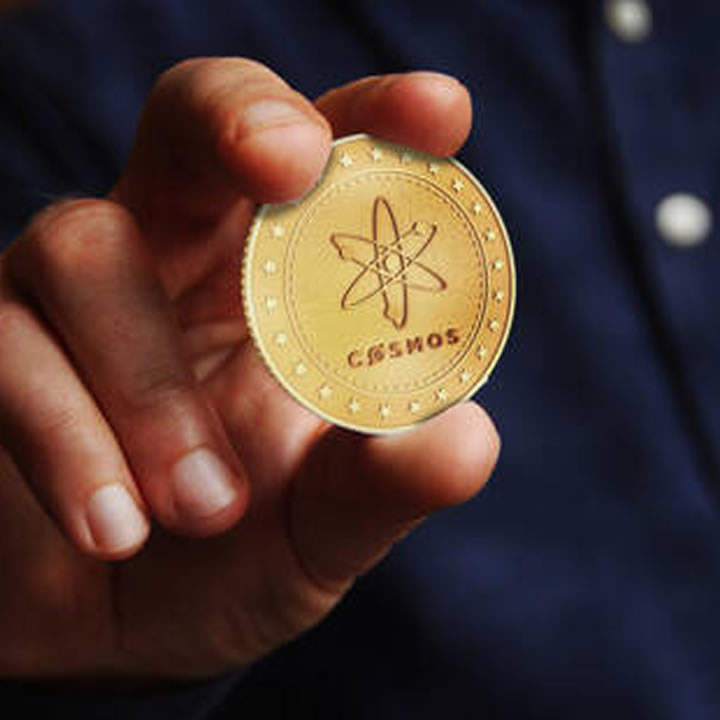Discover the remarkable development journey of Cosmos (ATOM), a groundbreaking blockchain project. This article unravels the genesis of the Cosmos, building the foundation and the evolution of the Cosmos ecosystem.
Begin your investment journey promptly on BitcoinDecode which provides investment opportunities along with insightful blogs and articles authored by industry specialists.
The Genesis of Cosmos
The genesis of Cosmos (ATOM) can be traced back to the visionary idea of creating an interconnected blockchain ecosystem.
Recognizing the limitations of isolated blockchain networks, the creators of Cosmos sought to establish a solution that would enable seamless communication and interoperability between different blockchains.
At its core, Cosmos aimed to address the fragmentation and lack of compatibility among existing blockchain platforms. The concept involved the development of a network of interconnected blockchains, allowing for the transfer of assets and data across different chains.
The visionaries behind Cosmos envisioned a future where blockchain networks could communicate and collaborate, unlocking a multitude of possibilities for decentralized applications (dApps) and cross-chain transactions. They believed that by fostering interoperability, Cosmos could overcome the siloed nature of blockchain technology and enable a new era of interconnectedness.
To realize this vision, the creators of Cosmos developed the Tendermint consensus algorithm.
This innovative consensus mechanism provided a robust and efficient way for validating transactions and securing the network. By utilizing a Byzantine Fault Tolerant (BFT) consensus algorithm, Cosmos ensured the reliability and security of its interconnected blockchain ecosystem.
The genesis of Cosmos marked a significant milestone in the blockchain industry. It laid the foundation for a new paradigm of blockchain development, where interoperability and collaboration were prioritized.
This groundbreaking approach garnered attention and support from both developers and blockchain enthusiasts, propelling Cosmos to become one of the most promising projects in the space.
Building the Foundation
Central to this foundation was the implementation of the Tendermint consensus algorithm.
Tendermint provided a reliable and efficient mechanism for reaching a consensus among validators in the Cosmos network. This consensus algorithm enabled fast transaction finality and ensured the security and integrity of the interconnected blockchain ecosystem.
In addition to the consensus algorithm, Cosmos focused on developing a robust networking layer. The networking layer facilitated the communication and coordination between different blockchain networks within the Cosmos ecosystem.
By establishing reliable peer-to-peer connections, Cosmos enabled the seamless transfer of assets and data across chains.
Another key aspect of building the foundation was the creation of the Inter-Blockchain Communication (IBC) protocol.
This protocol served as the backbone for cross-chain communication and interoperability within Cosmos. It allowed different blockchains to securely exchange information and assets, opening up a world of possibilities for decentralized applications and cross-chain transactions.
Furthermore, Cosmos prioritized modularity and extensibility in its development efforts. The architecture of Cosmos was designed to be modular, allowing for the integration of various modules and components to meet specific use cases and requirements.
This modular approach provided flexibility and adaptability, ensuring that Cosmos could evolve and scale as the ecosystem grew.
The Interchain Era Begins
The Interchain Era marked a significant milestone in the development journey of Cosmos (ATOM) as it introduced the concept of interchain communication, revolutionizing the way blockchains interacted with each other.
This era was characterized by the launch and implementation of the Inter-Blockchain Communication (IBC) protocol, which became the backbone of seamless communication and interoperability within the Cosmos ecosystem.
The Inter-Blockchain Communication (IBC) protocol served as a groundbreaking solution for enabling secure and trustless communication between different blockchains. It allowed for the transfer of assets and data across chains, regardless of their underlying architecture or consensus mechanisms.
This breakthrough technology opened up a myriad of possibilities for collaboration, decentralized applications (dApps), and cross-chain transactions within the Cosmos ecosystem.
The IBC protocol was designed to be flexible and scalable, allowing developers to build custom modules and extensions on top of it. This extensibility ensured that the protocol could adapt to different use cases and meet the evolving needs of the blockchain industry. Developers could leverage the IBC protocol to create innovative solutions, such as cross-chain decentralized exchanges, liquidity pools, and asset bridges.
The launch of the IBC protocol sparked enthusiasm and excitement within the blockchain community. It drew the attention of developers and projects from across the industry who recognized the potential of interchain communication.
The Interchain Era saw an influx of new projects integrating with Cosmos, expanding the ecosystem and fostering collaboration among different blockchain networks.
Conclusion
The development journey of Cosmos (ATOM) from concept to reality has revolutionized the blockchain industry.
Through its interconnected blockchain ecosystem and innovative technologies like the IBC protocol, Cosmos has unlocked new possibilities for collaboration, cross-chain transactions, and decentralized applications.
With a solid foundation and a vibrant community, Cosmos is poised to continue shaping the future of blockchain technology and drive further advancements in the interchain era.

